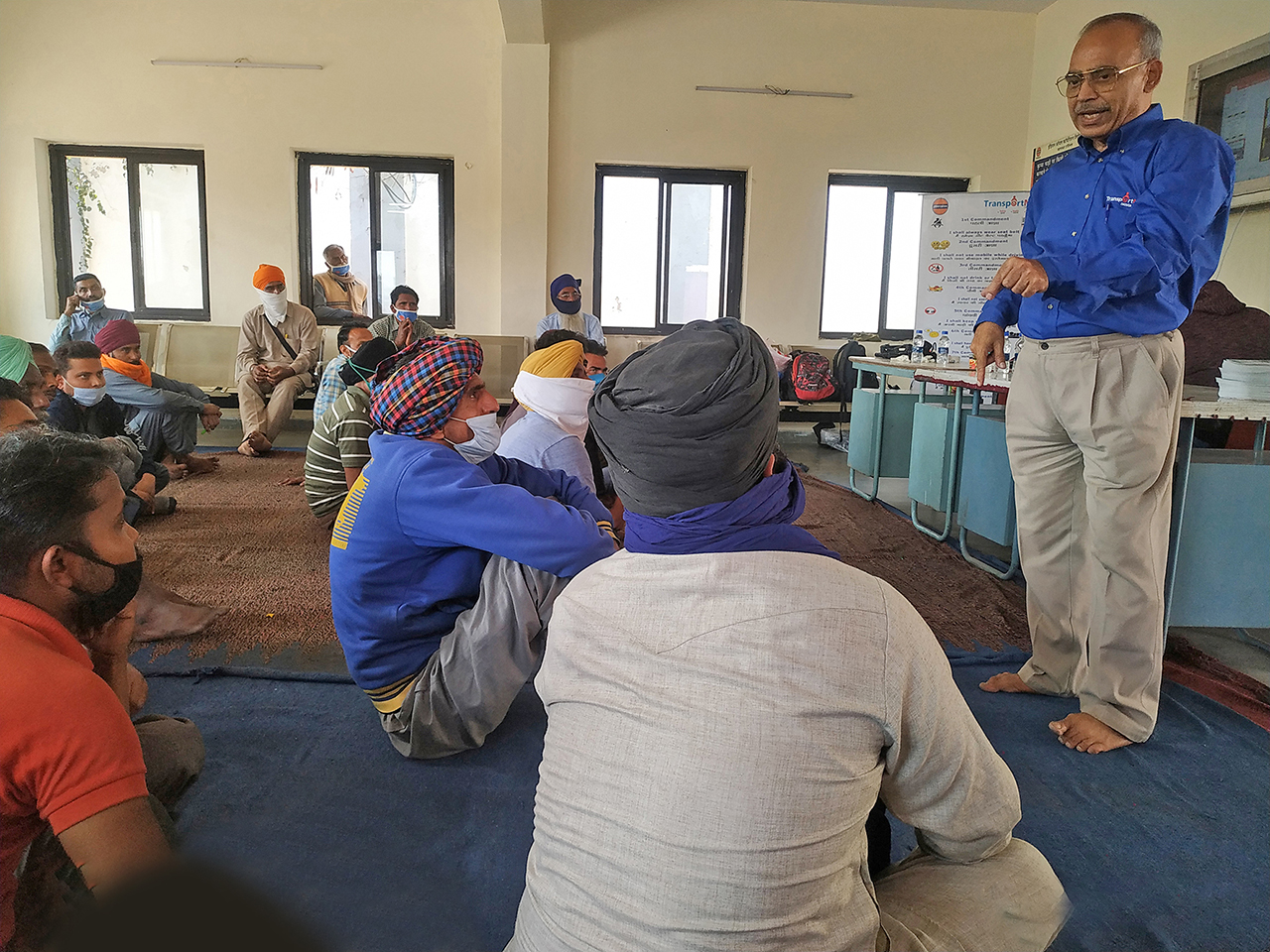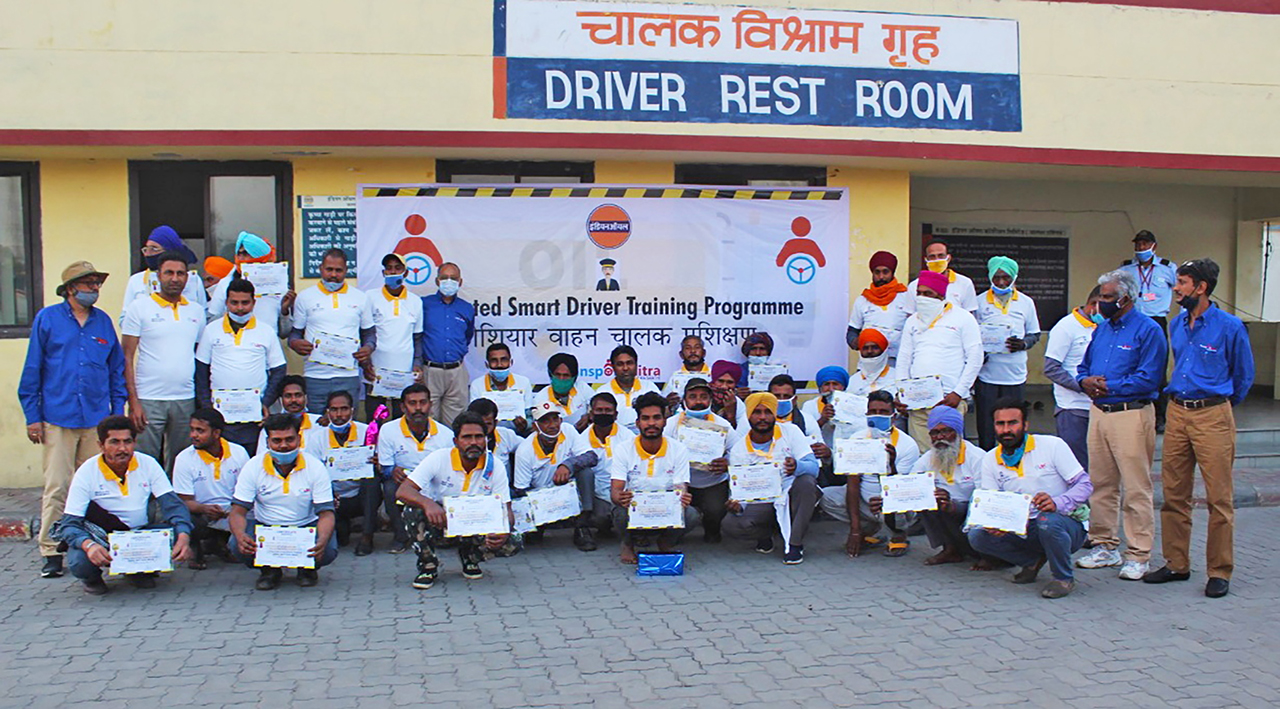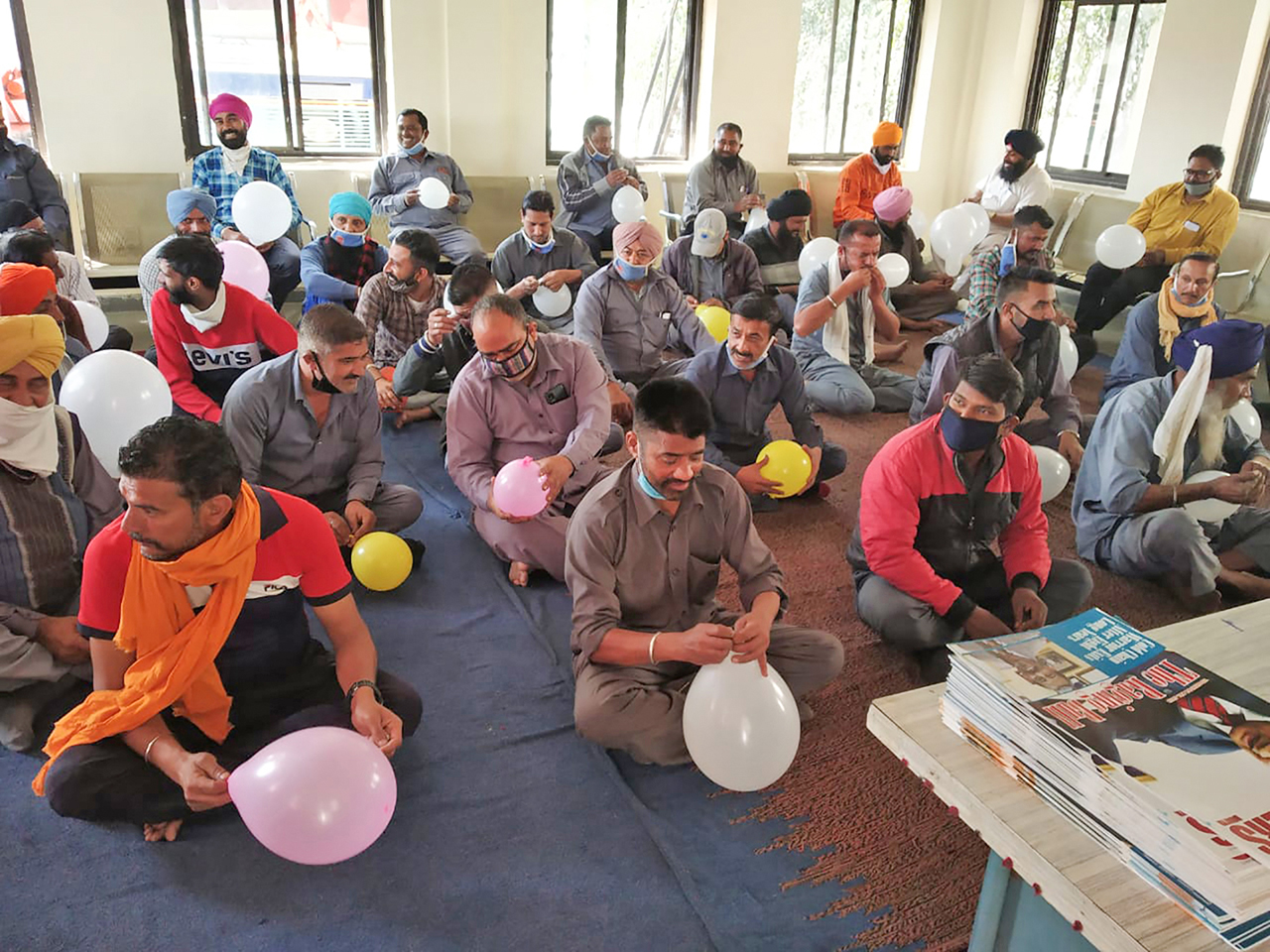Raghuram Sharma narrates his experience of conducting training programmes for drivers under the aegis of an initiative undertaken by the Indian Oil Corporation
It was my maiden highway trip to the Punjab. The old National Highway 1 in its entirety was part of the historic Grand Trunk Road or simply known as GT Road. The section of Delhi–Panipat–Ambala– Ludhiana–Jalandhar is part of the new National Highway 44. The four-lane national highway offers a panoramic view. Modernisation in the middle of green fields on either side of the highway was a treat to the eyes. Highways, especially in the Punjab, could well be compared to the smooth cheeks of a toddler. As we were nearing Jalandhar, receding winter winds were hissing some secrets in our ears.

Well, we were heading for Indian Oil Corporation’s Jalandhar terminal. It was for a ten-day training programme for their tank truck drivers. Petrol, diesel, aviation turbine fuel and LPG are transported to intra-states and inter-states mainly by their tank trucks from this terminal. Naturally a large number of truck drivers were stationed at the terminal. We were on our first phase of the mission ‘Smart Driver Program’ for 10 days at Jalandhar which was subsequently to be carried on to the other terminals in Haryana, Himachal Pradesh and Jammu and Kashmir.
Our main motto of the training was to create awareness amongst the driver community about various aspects of safety and to inculcate a sense of self-respect. The training module was prepared after a study of the truck drivers’ work needs as well as shortcomings in their social life nuances. Scheduling a training program for a full day, let alone for truck drivers, is a Herculean task by itself. Over the years as a trainer I have noticed the attention span of our highway soldiers has to be inculcated. I am saying so since by and large this community treats training as a waste of time and a loss to their earnings.

Leave alone the drivers, even small-time ‘motor owners’ also carry the same opinion. It is only of late that the realisation is dawning that a trained driver is a much safer bet for the business. Before dwelling on the topic of attention span, we must understand the psyche of a truck driver. Contrary to what they are when amongst their colleagues, this community, by and large, has a tendency of getting cocooned in front of unknown and more specifically the white-collared unfamiliar gentlemen. As a driver trainer you must strike the right chord to gel with them. Make them feel at home. Blend with them to win their trust, and all this in a subtle way.
To break the ice, we have adopted the balloon exercise. In my previous innings as a trainer in the aviation industry, I did try the same ice-breaker with a little twist to suit the educated lot of trainees and it was a success. Here, during the driver training programme, the idea was to bring out the child in them and thus mingle without apprehensions. Each driver trainee was given a balloon and a toothpick. They were asked to blow their balloons and hold it. Two teams were formed, and the rule was to safeguard their balloons in the given time to be declared a winner. Lo and behold, a virtual war broke out.
Vying with each another, they moved at the double, making the air ring with laughter and the roar of shouts. At the end of the game hardly a few had their prized balloons intact. Well, at least the training hall was no longer dull and dreary. At this juncture a thought was thrown at them. Was it possible whereby everyone would have been declared a winner? Was there any instruction to burst the balloon? Only if the teams had decided to restrain their members in not bursting each other’s balloons it was certainly possible not only to win but also to make everyone win. The nodding heads in agreement amid sudden pin-drop silence spoke volumes of their involvement in the class. Half the game was won!
The message of safety was well-driven by collectively making them take an oath of the 10 commandments – the quintessential safety points. The driver was the focal point. The entire gamut of safety was emphasised by driving home the point that driver safety is paramount. His safety would lead to the safety of his family, his vehicle and the goods in it, besides the safety of the co-users of the highways. Our country tops the list of road fatalities. And the prime reason is that no first aid gets provided to the victims in time. Who could be a better Man Friday in such a situation than our heroes of the road?

Keeping this in mind, we introduced a practical-oriented training of cardiopulmonary resuscitation (CPR) with hands-on practice on mannequins. This was the most participative segment of the day-long training session. How I wish every surface transport company encourages its drivers to undergo first aid training, and more specifically the CPR. In any driver training programme or for that matter any training, the takeaways from the session would be manifold if it is an interactive class. Coax the driver to respond, seek his suggestions on a given situation; in a nutshell, involve him in the class proceedings. We could achieve our goal by following these principles.
Jalandhar was no exception. Daily a turnout of 35-40 drivers was a good show. The measure of interest amongst the drivers was the fact that at times we couldn’t accommodate the overflowing candidates. This was mainly due to word of mouth publicity. They truly felt the training session is not a drag but a place where things could be learnt collectively and provides a chance to interact with the trainer without an iota of hesitation. The most talked about ‘smart driver module’ of Transport Mitra especially tailor-made to suit the candidates was well-taken by the drivers of the Jalandhar terminal of IOC. Indian Oil Corporation must be cheered for its effort in training their drivers to transform them into ‘smart drivers’.